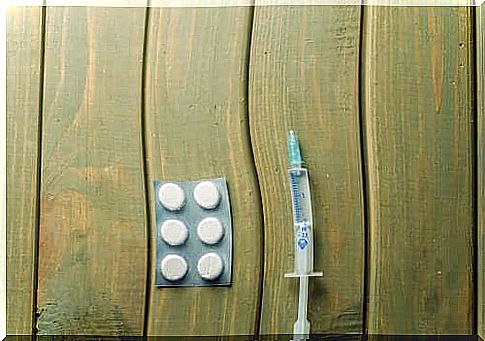Droal: What Is It And What Is It For?
Droal is a medicine used for the short-term treatment of moderate to severe pain after surgery or for the treatment of pain caused by renal colic.

Droal is a medicine that contains ketorolac trometamol as the active substance. It belongs to the group of analgesic, anti-inflammatory and antipyretic drugs.
This is a drug that is used for the short-term treatment of moderate to severe pain after surgery or for the treatment of pain caused by renal colic.
How does Droal work and what is it indicated for?

This drug inhibits the activity of cyclooxygenase and, therefore, the synthesis of prostaglandins. In analgesic doses, it exhibits a lower anti-inflammatory effect than other NSAIDs.
Ketorolac trometamol can be presented as a solution for injection and as tablets to be taken orally:
- The injectable presentation is used for the short-term treatment of moderate to severe pain postoperatively or for pain caused by renal colic.
- Ketorolac trometamol tablets are used for the short-term treatment of mild to moderate pain after surgery.
How to use Droal
The dose of this medicine should be adjusted according to the severity of the pain and the patient’s response, trying to give the lowest effective dose.
The recommended starting dose intramuscularly or intravenously is 10 mg. Then the dose would be 10-30 mg every 4-6 hours, depending on the patient’s need for pain control. For severe or very severe pain, the recommended starting dose is 30 mg. The maximum recommended daily dose is 90 mg for non-elderly adults and 60 mg for the elderly.
Treatment with ketorolac trometamol should be started in the hospital. Usually, the maximum duration of treatment is 2 days. However, if you switch to oral treatment, the total duration of treatment will be a maximum of 7 days.
For the treatment of renal colic pain, a single parenteral dose of 30 mg is recommended. In the majority of patients, treatment with parenteral ketorolac provides adequate analgesia. However, it can be used with opioid analgesics when, due to pain, the maximum recommended doses of ketorolac are not sufficient.
When is Droal contraindicated?
This drug has a series of contraindications such as:
- Hypersensitivity to ketorolac trometamol or other NSAIDs.
- Active peptic ulcer.
- Angioedema or bronchospasm.
- Severe heart failure.
- Moderate to severe renal impairment.
- Coagulation disorders.
Other contraindications are pregnancy, childbirth, breastfeeding and children under 16 years old. Droal should not be used with other NSAIDs, ASA, or with anticoagulant therapy.
Possible side effects of Droal
Droal tablets can have gastrointestinal side effects, such as peptic ulcer, gastrointestinal perforation, or bleeding. It can sometimes be fatal, especially in older people.
Other side effects can be:
- Nausea.
- Vomiting.
- Diarrhea.
- Gas.
- Constipation.
- Ill-being.
- Abdominal pain.
You may also see inflammation of the stomach, blood in the stool, and worsening of ulcerative colitis and Crohn’s disease.
Other problems that may appear after taking this medicine are:
- Metabolic or nutritional disorders, such as anorexia or increased potassium and sodium.
- Nervous system: meningitis, convulsions, dizziness, drowsiness, headache, hyperactivity and reduced ability to concentrate, insomnia, tingling and numbness.
- Psychiatric: abnormal dreams, impaired thinking, anxiety, depression, euphoria, hallucinations, psychotic reactions, nervousness.
- Renal and Urinary: Acute renal failure, pain in the kidneys, increased frequency of urination, urinary retention, decreased urine output, or other signs of kidney inflammation.
- Cardiac and vascular: swelling, hypertension, heart failure, arrhythmias, suffocation, palpitations, hypotension, chest pain, pallor.
- Reproductive system and breasts.
- Hepatobiliary: alteration of liver tests, hepatitis, jaundice, hepatic failure.
- Musculoskeletal and Connective Tissue: muscle pain.
- Vision changes and ringing in the ears.
Conclusion
Droal’s benefit-risk balance can be considered favorable if the authorized conditions of use are strictly observed. In other words, it is necessary to adhere to the indications, dosage and duration of treatment indicated by the doctor.









